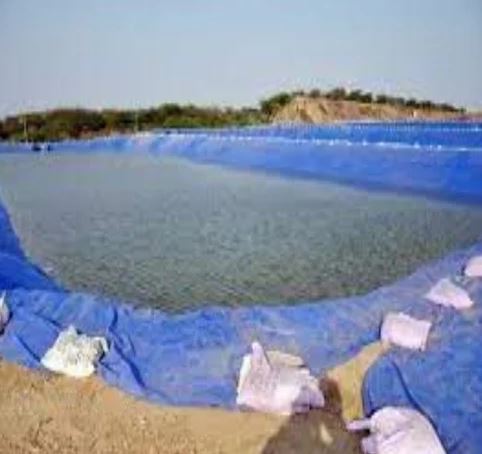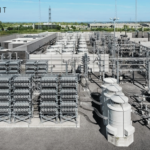Pond lining sheets play a crucial role in the construction and maintenance of ponds. Whether for agricultural, industrial, or recreational purposes, a high-quality pond liner ensures the longevity and functionality of your pond. In this comprehensive guide, we will explore everything you need to know about pond lining sheets, their benefits, types, installation process, and maintenance tips.
What Are Pond Lining Sheets?
Pond lining sheets are impermeable geomembranes used to retain water in ponds. These liners prevent water from seeping into the ground, thus maintaining the desired water level. They are made from various materials, including polyethylene, polyvinyl chloride (PVC), and rubber, each offering different benefits based on the application.
Benefits of Using Pond Lining Sheets
1. Water Conservation
Pond liners significantly reduce water loss due to seepage. This is especially important in areas with limited water resources or where water conservation is a priority.
2. Soil Erosion Prevention
Liners prevent soil erosion by keeping the water contained within the pond. This helps maintain the pond’s structure and reduces the need for frequent maintenance.
3. Enhanced Water Quality
By preventing the infiltration of soil and contaminants, pond liners help maintain better water quality, which is crucial for fish and plant health.
4. Versatility
Pond lining sheets are available in various materials and thicknesses, making them suitable for different types of ponds, including ornamental ponds, fish ponds, and irrigation ponds.
Types of Pond Lining Sheets
1. HDPE (High-Density Polyethylene) Liners
HDPE liners are known for their durability and resistance to UV radiation, chemicals, and punctures. They are widely used in large-scale pond projects.
2. LDPE (Low-Density Polyethylene) Liners
LDPE liners are more flexible than HDPE liners, making them easier to install in ponds with complex shapes. However, they are less resistant to punctures and UV radiation.
3. PVC (Polyvinyl Chloride) Liners
PVC liners are highly flexible and easy to install. They are suitable for smaller ponds and ornamental water features. However, they may not be as durable as HDPE liners in harsh environmental conditions.
4. EPDM (Ethylene Propylene Diene Monomer) Liners
EPDM liners are rubber-based and known for their flexibility and resistance to extreme temperatures. They are ideal for ponds that require frequent adjustments or expansions.
How to Install Pond Lining Sheets
1. Preparation
- Site Selection: Choose a suitable location for your pond, considering factors like sunlight, drainage, and proximity to water sources.
- Excavation: Dig the pond to the desired shape and depth, ensuring smooth and even surfaces to avoid liner punctures.
- Base Preparation: Remove sharp objects and debris from the pond base. Adding a layer of sand or underlay can provide extra protection for the liner.
2. Liner Placement
- Liner Unfolding: Carefully unfold the pond liner and position it over the pond. Ensure there is enough material to cover the pond’s entire surface and edges.
- Fitting: Adjust the liner to fit the pond contours, making sure it lies flat without any wrinkles or folds.
- Securing Edges: Anchor the liner edges with rocks, soil, or stakes to keep it in place.
3. Filling the Pond
- Gradual Filling: Slowly fill the pond with water, allowing the liner to settle into place. Check for any adjustments needed to eliminate wrinkles.
- Edge Trimming: Once the pond is filled, trim any excess liner, leaving enough material to secure the edges firmly.
Maintenance Tips for Pond Lining Sheets
1. Regular Inspections
Inspect the pond liner regularly for signs of damage, such as punctures or tears. Early detection and repair can prevent major water loss.
2. Cleaning
Remove debris, algae, and sediment buildup from the pond to prevent liner damage. Use pond-safe cleaning agents to maintain water quality.
3. Repairing Damages
For minor punctures, use repair kits compatible with your liner material. For extensive damage, consider professional repair services to ensure a lasting fix.
Benefits of Using Pond Lining Sheets
1. Water Conservation
Pond liners significantly reduce water loss due to seepage. This is especially important in areas with limited water resources or where water conservation is a priority.
2. Soil Erosion Prevention
Liners prevent soil erosion by keeping the water contained within the pond. This helps maintain the pond’s structure and reduces the need for frequent maintenance.
3. Enhanced Water Quality
By preventing the infiltration of soil and contaminants, pond liners help maintain better water quality, which is crucial for fish and plant health.
4. Versatility
Pond lining sheets are available in various materials and thicknesses, making them suitable for different types of ponds, including ornamental ponds, fish ponds, and irrigation ponds.
Types of Pond Lining Sheets
1. HDPE (High-Density Polyethylene) Liners
HDPE liners are known for their durability and resistance to UV radiation, chemicals, and punctures. They are widely used in large-scale pond projects.
2. LDPE (Low-Density Polyethylene) Liners
LDPE liners are more flexible than HDPE liners, making them easier to install in ponds with complex shapes. However, they are less resistant to punctures and UV radiation.
3. PVC (Polyvinyl Chloride) Liners
PVC liners are highly flexible and easy to install. They are suitable for smaller ponds and ornamental water features. However, they may not be as durable as HDPE liners in harsh environmental conditions.
4. EPDM (Ethylene Propylene Diene Monomer) Liners
EPDM liners are rubber-based and known for their flexibility and resistance to extreme temperatures. They are ideal for ponds that require frequent adjustments or expansions.
How to Install Pond Lining Sheets
1. Preparation
- Site Selection: Choose a suitable location for your pond, considering factors like sunlight, drainage, and proximity to water sources.
- Excavation: Dig the pond to the desired shape and depth, ensuring smooth and even surfaces to avoid liner punctures.
- Base Preparation: Remove sharp objects and debris from the pond base. Adding a layer of sand or underlay can provide extra protection for the liner.
2. Liner Placement
- Liner Unfolding: Carefully unfold the pond liner and position it over the pond. Ensure there is enough material to cover the pond’s entire surface and edges.
- Fitting: Adjust the liner to fit the pond contours, making sure it lies flat without any wrinkles or folds.
- Securing Edges: Anchor the liner edges with rocks, soil, or stakes to keep it in place.
3. Filling the Pond
- Gradual Filling: Slowly fill the pond with water, allowing the liner to settle into place. Check for any adjustments needed to eliminate wrinkles.
- Edge Trimming: Once the pond is filled, trim any excess liner, leaving enough material to secure the edges firmly.
Environmental Considerations
1. Eco-Friendly Materials
Opt for eco-friendly liner materials that have minimal impact on the environment. EPDM and PVC liners are often considered more environmentally friendly compared to some plastic alternatives.
2. Wildlife Safety
Ensure that the pond and its liner do not pose a threat to local wildlife. Consider creating gentle slopes in the pond design to allow animals to exit easily.
3. Sustainable Water Management
Implement sustainable water management practices by using rainwater harvesting systems to fill your pond. This reduces reliance on external water sources and promotes conservation.
Cost Considerations
1. Material Costs
The cost of pond lining sheets varies depending on the material, thickness, and size. HDPE liners are typically more expensive but offer greater durability, while PVC liners are more affordable but may require more frequent replacements.
2. Installation Costs
Professional installation ensures proper fitting and longevity of the pond liner but comes at an additional cost. DIY installation can save money but requires careful planning and execution.
3. Maintenance Costs
Regular maintenance, including inspections, cleaning, and repairs, is essential for extending the lifespan of the pond liner. Budgeting for these ongoing costs helps maintain the pond’s health and functionality.
Conclusion
Pond lining sheets are essential for creating and maintaining efficient and durable ponds. By selecting the right type of liner and following proper installation and maintenance practices, you can ensure the longevity and functionality of your pond. Whether you are building a pond for agricultural, industrial, or aesthetic purposes, investing in high-quality pond lining sheets is a wise decision that will pay off in the long run.




